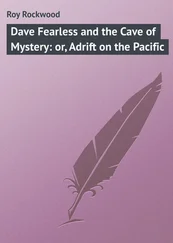As July ended and August began, the rains came.
It should not have been raining, for the monsoons were not due until November. It was the time of the southeast trades, and there should have been little rain; yet, the rains were pouring down from New Zealand to Rabaul, marching up and down the Coral Sea in slanting gray sheets, making an utter mush of the First Marine Division’s piles of supplies lying naked on the Wellington docks, and drumming out a tattoo of welcome to Vice-Admiral Gunichi Mikawa as he sailed into Simpson Harbor at Rabaul to occupy the headquarters of his newly activated Eighth Fleet.
Mikawa’s command had been activated after the Midway debacle had forced cancellation of the invasion of New Caledonia and the Fijis. Japan was now going to concentrate on “the Outer South Seas,” that is a huge area encompassing New Guinea, New Britain, and the Solomons, with headquarters at Rabaul. Mikawa’s new Eighth Fleet would relieve the Fourth Fleet of responsibility in this theater, and Mikawa would thereafter support General Hyakutake’s 17th Army in the paramount operation against Port Moresby.
Gunichi Mikawa was a combat veteran. He had been second in command at Pearl Harbor and had led a battleship division at Midway. He was gentle and soft-spoken, in appearance one of those “British admirals” in which the Japanese Navy abounded. Having taken the British Royal Navy as their model, many Japanese officers had also patterned themselves on the English gentleman 2; often equating the gentlemanly with a kind of amiable reticence. Fortunately for Emperor Hirohito, Gunichi Mikawa was not one of them: his silken manner sheathed the sword of a samurai.
On July 14, Admiral Mikawa called Commander Toshikazu Ohmae to his modest home in Setagaya, an outlying ward of Tokyo. Ohmae, considered one of the Japanese Navy’s outstanding planners, was to be the Eighth Fleet’s operations officer. The two men sat among the bright leaves sipping tea. Mikawa expressed his delight in exercising independent command.
“I want you to go out to the forward areas for a first-hand look at the situation,” he told Ohmae. “Survey local conditions at our bases.” 3
Ohmae departed two days later. On July 20 his flying boat taxied into the seaplane base at Rabaul. It was a clear day. A bright sun sparkled on the blue waters of Simpson Harbor, glinting off the red hull of a half-sunken freighter. Ohmae was impressed by this testimony to American bombing accuracy, but he was not impressed by Rabaul. Small vessels were bunched together with no thought for protection against air raids. Ashore there was interservice bickering, and hostility toward Japan’s new Eighth Fleet. Ohmae’s request for headquarters was countered with the insinuation that any genuine naval commander should prefer to command afloat. He replied that Admiral Mikawa wanted to keep his forces safely to the rear—behind New Ireland to the north while directing operations ashore at Rabaul. Grudgingly, the base force set aside a ramshackle building without even toilet facilities.
Talks with officers of the 25th Air Flotilla also depressed Ohmae. This outfit—which included such famous pilots as Saburo Sakai, Nishizawa, and Ota—had been carrying on the gruelling air war against Port Moresby. It seemed to Ohmae that the 25th Air Flotilla was interested in nothing but relief. 4Worse, no one—Army or Navy—seemed concerned about the southern Solomons. Ohmae was gratified, however, to learn that an airfield was under construction on Guadalcanal Island.
Leaving Rabaul, Captain Ohmae flew north to the great sea bastion at Truk. There, he was invited to a dinner in honor of Lieutenant General Haruyoshi Hyakutake. He was dismayed to find that Hyakutake had not the slightest interest in the southern Solomons. Hyakutake cared only for the Port Moresby operation. Even the Truk admirals joined the general in dismissing Ohmae’s fears of an enemy invasion of the Solomons as the anxiety of a newcomer.
On July 25 Admiral Mikawa arrived at Truk. He was aboard his flagship, Chokai , a powerful cruiser disfigured, in American eyes, by her bizarre silhouette described by a fat forward stack canted sharply back and a skinny second stack sticking straight up. Ohmae reported to Mikawa. Disturbed by what he heard, Mikawa requested an immediate conference with Vice-Admiral Shigeyoshi Inoue, commander of the Fourth Fleet. They met that afternoon and Inoue also laughed at Mikawa’s fears for the Solomons. The enemy, said Inoue, was still reeling from the shock of defeats from Pearl Harbor to Singapore. Neither admiral said a word about Midway, even though both of them knew all the details of that disaster. Inoue, it seemed to Mikawa, appeared anxious to have the new Eighth Fleet relieve Fourth Fleet of responsibility for that huge Outer South Seas Area centering at Rabaul. At midnight of the twenty-sixth the transfer was effected.
Next day Mikawa and Ohmae sailed south for Rabaul. Both sailors who loved the sea, they were happy to have the turbines of a ship turning beneath their feet again. They tried to take a more optimistic view of that exposed left flank in the Solomons. At least, as Ohmae had discovered, the new airfield suitable for sixty planes should lessen the danger of invasion there.
It should be ready by August 7.
August 7 was also the date for the American invasion.
Admiral King had set the new deadline. In early July the Joint Chiefs had received a report from Admiral Ghormley and General MacArthur, stating: “It is our joint opinion, arrived at independently and confirmed after discussion, that the initiation of this operation at this time, without reasonable assurance of an adequate air cover during each phase, would be attended with the gravest risk… It is recommended that this operation be deferred pending the further development of forces in the South Pacific and Southwest Pacific Areas…” King read the dispatch and snorted to General Marshall: “Three weeks ago MacArthur stated that, if he could be furnished amphibious forces and two carriers, he could push right through to Rabaul… He now feels that he not only cannot undertake this extended operation but also not even the Tulagi operations.” 5Unimpressed, Admiral King replied:
“Execute.” 6
But then, after General Vandegrift had made it clear that he could not possibly invade by August 1, King agreed to a three-day postponement. After Ghormley and Vandegrift protested anew, he added three more days of grace. But that was it: it had to be August 7. Coastwatcher reports and reconnaissance flights of Army B-17s indicated that the airfield on Guadalcanal was nearly completed. To invade in the face of land-based air would be far too dangerous.
And so Archer Vandegrift went grimly ahead with the invasion which his staff was already calling “Operation Shoestring.”
The area Vandegrift hoped to seize centered around the airfield and ran about ten miles along the mid-northern coast and perhaps three miles inland. On its west, according to the details of an old marine chart, was the Lunga River and on the east was the Ilu River. Vandegrift had learned from Martin Clemens that this area was defended by from 2000 to 10,000 Japanese—a disturbingly loose estimate—and that there was a lesser force on Tulagi and Gavutu-Tanambogo. Clemens had also reported that there were enemy guns emplaced on the beaches west of the Lunga, and so Vandegrift decided to land on the unprotected beaches east of the Ilu. The landings on Tulagi were to be made on its open western end, while the twin islets of Gavutu-Tanambogo, being so small and well-fortified, would simply have to be stormed.
Guadalcanal, of course, was to require the bulk of Vandegrift’s forces, and it was still the biggest worry. Information on the island’s terrain consisted of that old marine chart, a few faded photographs made by missionaries five years before the Japanese landed, and a short story by Jack London, as well as London’s personal anathema upon the entire group: “If I were a king, the worst punishment I could inflict on my enemies would be to banish them to the Solomons. On second thought, king or no king, I don’t think I’d have the heart to do it.” To supplement this unspectacular hoard, Vandegrift sent Lieutenant Colonel Frank Goettge flying to Australia. Goettge conferred with Commander Feldt and his hard-bitten islanders. He brought back some helpful information on the target area’s terrain as well as eight islanders who had lived on Tulagi or Guadalcanal. The islanders—whose elephantine thirst made the purchase of Scotch whisky an acceptable military expense—were interrogated almost daily. Some of their information proved invaluable; some, just because it was thought to be invaluable, was to prove costly. One day General Vandegrift called for a plantation manager who had lived near Red Beach, the designated landing zone on Guadalcanal. Vandegrift pointed to the Ilu River on his chart, and inquired about the river’s characteristics.
Читать дальше












